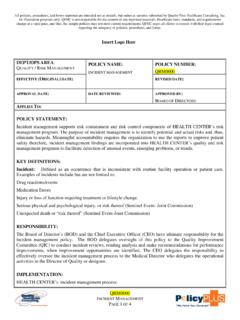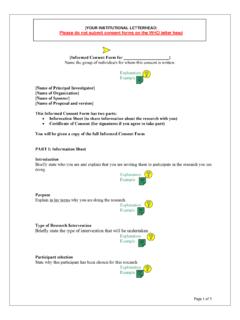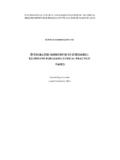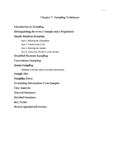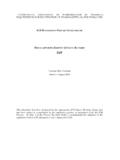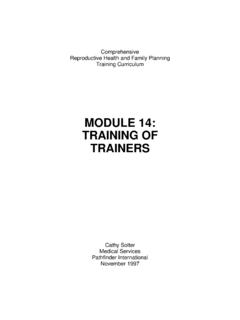Transcription of Standardized Blood Pressure Measurement …
1 Standardized Blood Pressure Measurement Technique Skills Checklist Performance Standards Met Not Met Step 1. Prepare Patient Prepared setting for Measurement that was quiet and free of interruptions. Asked patient about eating, drinking caffeine, smoking or exercising 30 minutes before Measurement . Measurement was delayed if there were any "Yes" answers. Seated patient with feet flat on floor, back supported for a period of rest. Positioned patient's bared arm on a hard surface, with midpoint of upper arm at level of heart. Step 2. Select Appropriate Cuff Size Used appropriate cuff size, determined by measuring patient's arm using 80/40 rule. Step 3. Position Cuff on Arm Located brachial artery by palpation. Centered bladder of the cuff over brachial artery. Wrapped cuff smoothly and snugly around patient's arm, with the lower edge one inch above bend in elbow. Step 4. Position Manometer Placed aneroid dial at eye level and easily visible.
2 Checked cuff tubing for obstruction. Step 5. Estimate Systolic Pressure Placed first and second fingers firmly over patient's radial pulse. Inflated cuff to approximately 70 mm Hg. Inflated cuff at 10 mm Hg increments until the patient's pulse disappears. Deflated cuff completely. Waited 15 seconds before continuing with technique. 1. Performance Standards Met Not Met Step 6. Prepare Stethoscope Placed earpieces in ears so they were angled forward. Placed stethoscope head in bell position. Step 7. Position Stethoscope on Arm Placed bell side of stethoscope over brachial artery. Step 8. Inflate Cuff/Deflate Cuff Inflated cuff quickly to a level 20 30 mm Hg over palpate estimate. Deflated cuff at a steady rate of 2 3 mm Hg/second. Step 9. Identify Korotkoff Sounds Obtained systolic (Phase 1) and diastolic (Phase 5, or 4 if no Phase 5) Blood Pressure . Step 10. Continue to Deflate Cuff Deflated cuff at least an additional 10 mm Hg after Phase 4, then quickly deflated completely.
3 Step 11. Record Blood Pressure Recorded systolic and diastolic Blood Pressure . Recorded cuff size, arm used and patient's position (if not seated). Step 12. Recheck Blood Pressure Waited one to two minutes before recheck. Performed Measurement on same arm as previous Measurement . Recorded both measurements. Explained measurements to patient and discussed recommended follow-up. Additional Comments: Signature of Evaluator Date of Evaluation 2.



